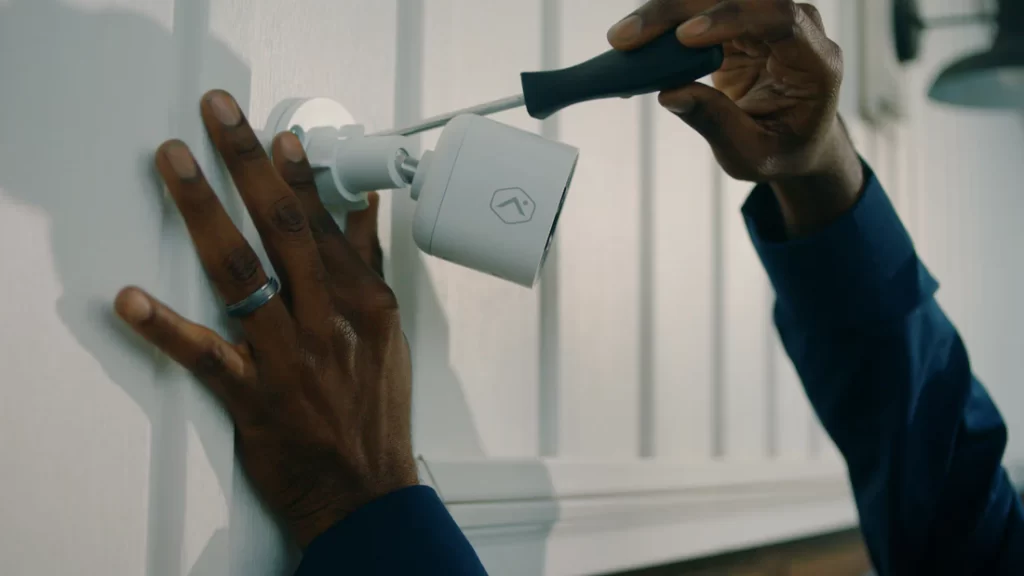The age of smart homes has ushered in a new era of home security. No longer confined to traditional alarms and cameras, today’s security systems offer an integrated, intelligent approach to safeguarding your home and loved ones. This guide delves into the best practices and strategies for designing a smart home security system tailored to your specific needs.
Understanding Smart Home Security
At its core, a smart home security system is a network of devices that work together to monitor and protect your property. These devices can include:
- Smart Cameras: These provide real-time video feeds, motion detection, and often, two-way communication.
- Smart Doorbells: These alert you to visitors, allow remote communication, and capture video footage.
- Smart Locks: These enable remote locking/unlocking, access codes, and activity logs.
- Motion Sensors: These detect movement within your home, triggering alerts or activating other devices.
- Environmental Sensors: These monitor for smoke, carbon monoxide, water leaks, or temperature changes.
- Alarm Systems: These provide audible alerts and often, professional monitoring services.
The beauty of a smart home security system lies in its connectivity. These devices communicate with each other, and often with a central hub, allowing for automation and remote control through smartphone apps or web interfaces. When comparing systems like Xfinity Home Security vs ADT, it’s essential to consider the ease of integration and control these platforms offer.

Best Practices for Designing Your System
- Assess Your Needs: Start by identifying your priorities. Do you want to primarily deter intruders, monitor for specific events, or have remote access to your home? Understanding your needs will guide your device selection.
- Choose a Reliable Platform: Many smart home platforms exist (e.g., Google Home, Amazon Alexa, Apple HomeKit). Select one that aligns with your existing devices and preferences. Ensure it has strong security features and a user-friendly interface.
- Prioritize Security: Change default passwords, use two-factor authentication, and keep your system’s firmware updated. Be wary of connecting your system to public Wi-Fi networks.
- Start with the Essentials: Begin with the basics – a smart doorbell, a few strategically placed cameras, and perhaps a smart lock. You can always expand your system later.
- Layer Your Security: Don’t rely on a single type of device. Combine cameras with motion sensors, door/window sensors, and alarms for comprehensive protection.
- Consider Professional Monitoring: While self-monitoring is an option, professional monitoring adds an extra layer of security, especially if you’re often away from home.
- Placement is Key: Strategically position cameras to cover entry points, blind spots, and valuable assets. Install motion sensors in high-traffic areas and place environmental sensors where they’re most likely to detect issues.
- Automate for Efficiency: Leverage your system’s automation capabilities. For example, set your lights to turn on when motion is detected at night, or have your cameras start recording when a door is opened.
- Test and Adjust: Regularly test your system to ensure all devices are functioning correctly. Adjust settings as needed to minimize false alarms and optimize performance.
Advanced Strategies
- Geofencing: This feature allows your system to arm/disarm automatically based on your smartphone’s location, adding convenience and ensuring your home is always protected.
- Voice Control: Integrate your system with voice assistants like Alexa or Google Assistant for hands-free control.
- Facial Recognition: Some advanced cameras offer facial recognition, allowing you to identify familiar faces and receive alerts for unknown individuals.
- Cloud Storage: Store video footage securely in the cloud for remote access and as a backup in case of device damage or theft.
The Future of Smart Home Security
As technology evolves, so will smart home security. We can expect to see:
- Increased use of artificial intelligence (AI) for better threat detection and pattern recognition.
- Integration with wearable devices and health sensors for personal safety monitoring.
- Enhanced cybersecurity measures to protect against hacking and data breaches.
Conclusion
Designing a smart home security system is a personalized endeavor. By understanding your needs, selecting the right devices, and implementing best practices, you can create a robust system that provides peace of mind and protects your home for years to come.